A day in the life of the new Louvre Abu Dhabi Annexe’s pricey new Leonardo Salvator Mundi
On February 10th the Financial Times carried an interview – “The king of King Street” – with Guillame Cerutti, the French-born and École Nationale d’Administration-educated CEO of the (French-owned) British auction house, Christie’s, by Georgina Adam.
On the same day as the interview by Georgina Adam, author of Dark Side of the Boom: The Excesses Of The Art Market In The 21st Century, the French Prime Minister, Edouard Philippe, toured the Louvre Abu Dhabi Museum on Saadiyat island in the Emirati capital, to launch the French-Emirati “Year of Cultural Dialogue” in the company of Shiekh Hamed bin Zayed Al Nahyan, CEO of Abu Dhabi Investment Authority (see Figs. 4 and 5).
Above, Fig. 1: Christie’s CEO Guillame Cerutti, as photographed by Anna Huix for the FT, 10 February 2018.
Georgina Adam asked Christie’s CEO if he had been surprised by the price of the Salvator Mundi sold at Christie’s, New York, on 17 November 2017 for $450 million (as an entirely autograph Leonardo da Vinci painting):
“He pauses. ‘Yes, because before the sale it was difficult to ask anyone to predict that level. But at the same time our major clients are looking for trophies. They want quality and rarity in any field. This painting had both aspects, it ticked all the boxes.’”
On 11 December 2017 money.cnn reported that Abu Dhabi’s Department of Culture and Tourism had confirmed that it had purchased what was the most expensive painting in the world for the Louvre Abu Dhabi, the museum’s first outpost outside France, but it had declined to comment on the owner. The New York Times had reported (“Mystery Buyer of $450 Million ‘Salvator Mundi’ Was a Saudi Prince”) that the man behind the purchase was a little-known Saudi prince named Bader bin Abdullah bin Farhan al-Saud, an associate of Crown Prince Mohammed bin Salman. Saudi Arabia, through its embassy in Washington, subsequently said that the prince was acting as a middleman for the United Arab Emirates, a key ally in the region: “His Highness Prince Badr, as a friendly supporter of the Louvre Abu Dhabi, attended its opening ceremony on November 8th and was subsequently asked by the Abu Dhabi Department of Culture and Tourism to act as an intermediary purchaser for the piece.”
When Adam asked about the Salvator Mundi painting’s condition Guillame Cerutti responded:
“There were questions on that, we didn’t hide anything. It is 500 years old and the condition reflected that – but we were transparent about this. It is a beautiful painting, and the day after the sale, the Louvre requested it for an exhibition in 2019.”
In Christie’s pre-sale essay “Salvator Mundi – The rediscovery of a masterpiece: Chronology, conservation, and authentication” the painting was said to have been discovered in 2005 “masquerading as a copy” in a “regional auction” in the United States. The curiously anthropomorphised notion of an inanimate artefact seeking to deceive, might no less appropriately be applied today to a damaged and covertly re-restored painting that still lacks a secure provenance. The essay’s account of the work’s “conservation” revealed that in 2007 “A comprehensive restoration of the Salvator Mundi is undertaken by Dianne Dwyer Modestini, Senior Research fellow and Conservator of the Kress Program in Paintings Conservation at the Conservation Center of the Institute of Fine Arts, New York University.” Modestini was said to have concluded that: “the important parts of the painting are remarkably well-preserved, and close to their original condition”.
Above, Figs. 2 and 3: showing the new Louvre Abu Dhabi Leonardo Salvator Mundi when exhibited in 2011-12 as an entirely autograph Leonardo in the National Gallery’s Leonardo da Vinci ~ Painter at the Court of Milan exhibition, left; and then, right, as offered for sale by Christie’s, New York, on 15 November 2017.
In its pre-sale lot essay on the painting, Christie’s acknowledged an “initial phase of the conservation” that ran from 2005 to 2007, and that the entire conservation programme had been brought to completion in 2010 before the painting was included as “The newly discovered Leonardo masterpiece, dating from around 1500” in the National Gallery’s major Leonardo exhibition of 2011-12. The essay notes that the painting had been acquired from “an American estate”. At no point before the November 2017 sale, so far as we know, had Christie’s acknowledged the further extensive campaign of restoration that we have shown to have occurred between 2012, when the picture returned from London to New York, and the November 2017 sale where it fetched $450 million and caused some commentators to fear that an important and vital market might be “on the edge of becoming seriously troubling” – see: “The $450m New York Leonardo Salvator Mundi Part II: It Restores, It Sells, therefore It Is”.
Notwithstanding Mr Cerutti’s FT interview, we still do not know when – or to what purpose – restoration was resumed after the National Gallery Leonardo exhibition but, as we have reported, a Christie’s spokeswoman confirmed to the Daily Mail in December 2017 that Dianne Modestini, had worked on the painting “Prior to its presentation for sale at Christie’s”. (See “Auctioneers Christie’s admit Leonardo da Vinci painting which became world’s most expensive artwork when it sold for £340m has been retouched in the last five years”.)
In today’s Guardian (Financial, p. 32, “A switch is flipped and renaissance is suddenly fragile”), Larry Elliot attributes the Salvator Mundi’s gasp-inducing record high price to an “obvious” explanation: “Rock-bottom interest rates and Quantitative Easing have driven up the prices of assets sought by the already well-off. It has been the classic case of too much money chasing too few goods.” Georgina Adam noted that Guillaume Cerutti “quickly points out that in 2017 Christie’s sold seven of the top 10 lots at auction – including the Leonardo”. Cerutti might arguably be seen as one who has fuelled as well as benefitted from the current boom by having shut down Christie’s lower-value operation in South Kensington and cut-back that in Amsterdam so as to direct resources to Asia and Los Angeles.
Above, Figs. 4 and 5: Top, French Prime Minister, Edouard Philippe (right), tours the Louvre Abu Dhabi Museum on February 10, 2018, on Saadiyat island in the Emirati capital, to launch the French-Emirati “Year of Cultural Dialogue”. Above, the French Prime Minister Edouard Philippe (centre) poses with Shiekh Hamed bin Zayed Al Nahyan (right), CEO of Abu Dhabi Investment Authority, during inauguration of BNP paribas Abu Dhabi Global market Branch on February 10, 2018, as photographed by Karim Sahib for AFP and featured in Art Daily’s The Best Photos of the Day on February 11, 2018.
Michael Daley, 12 February 2018


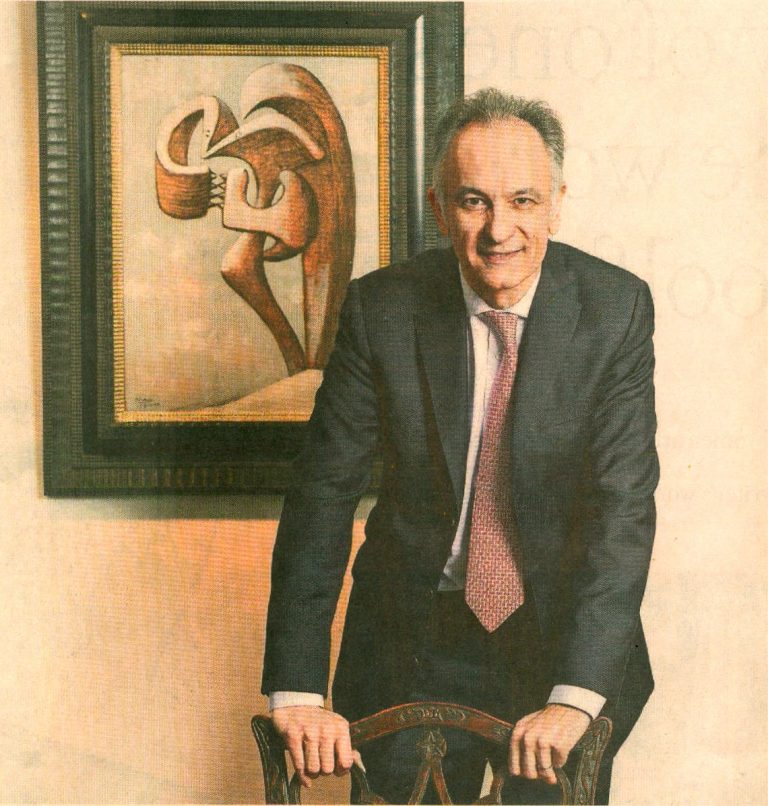
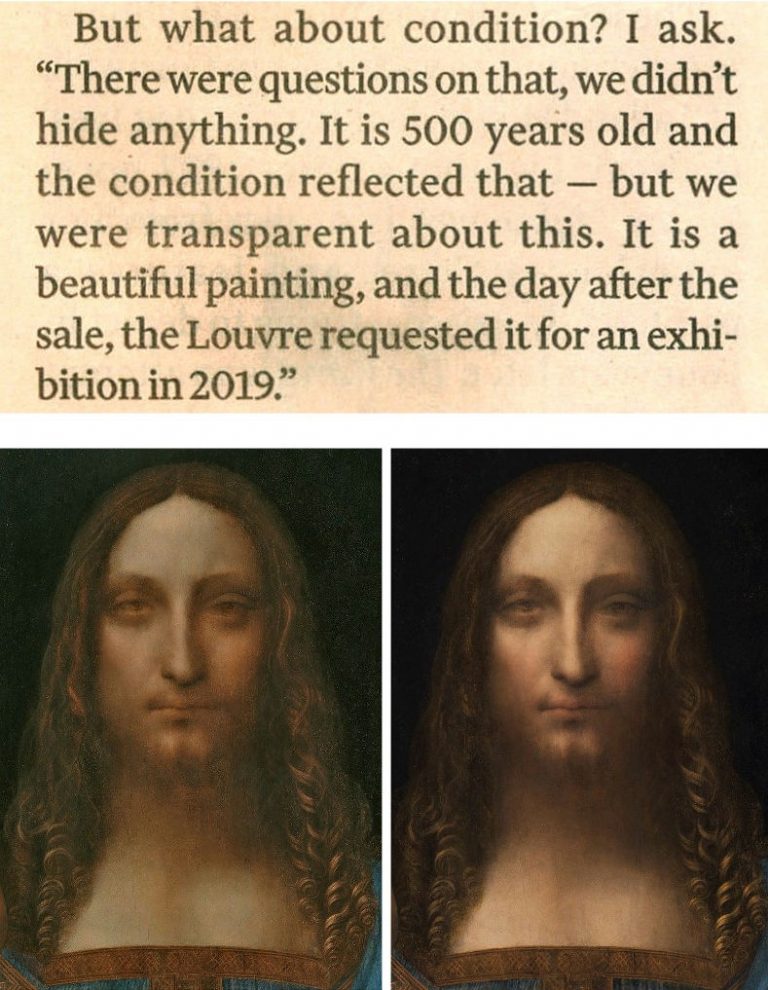
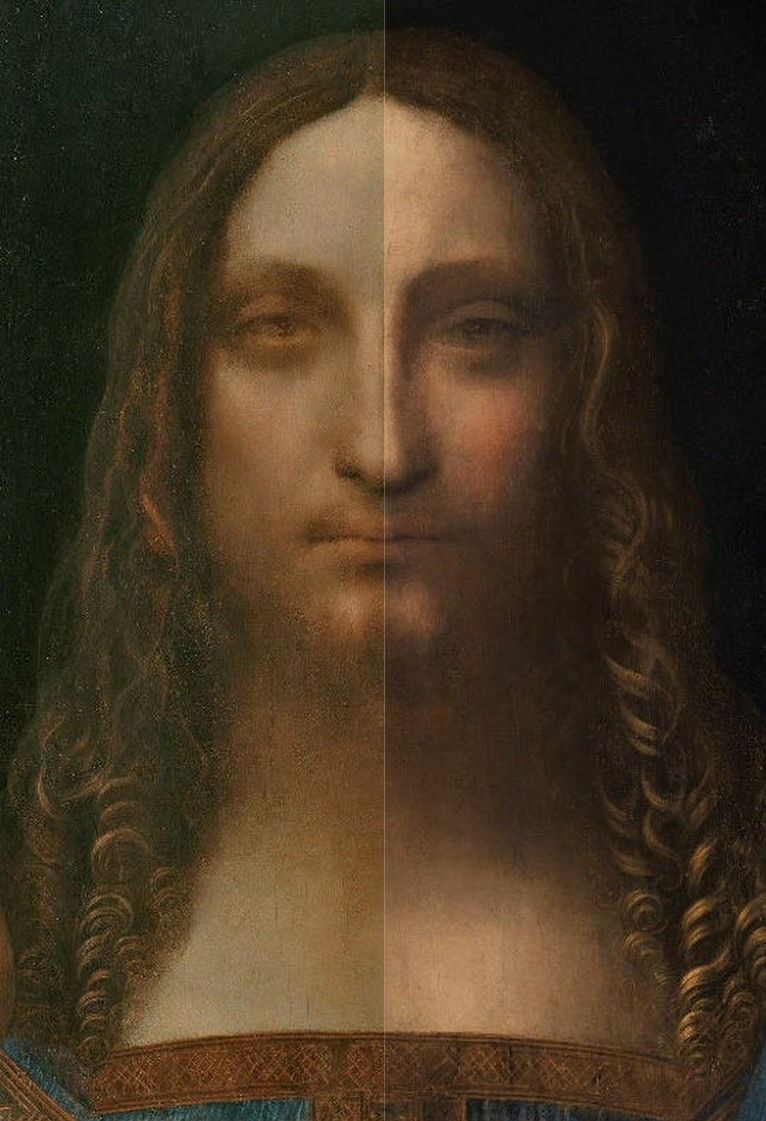
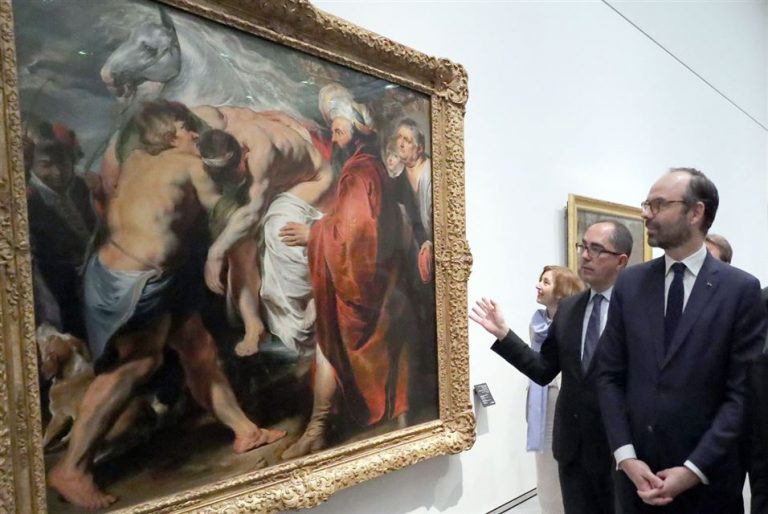
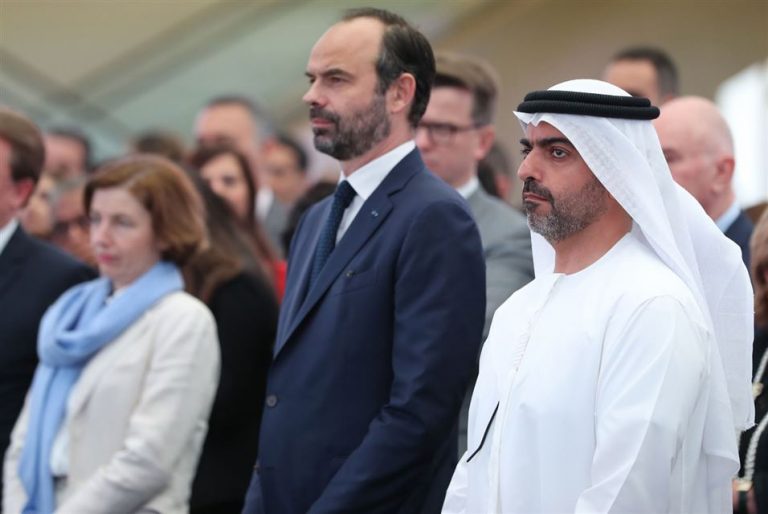
Leave a Reply